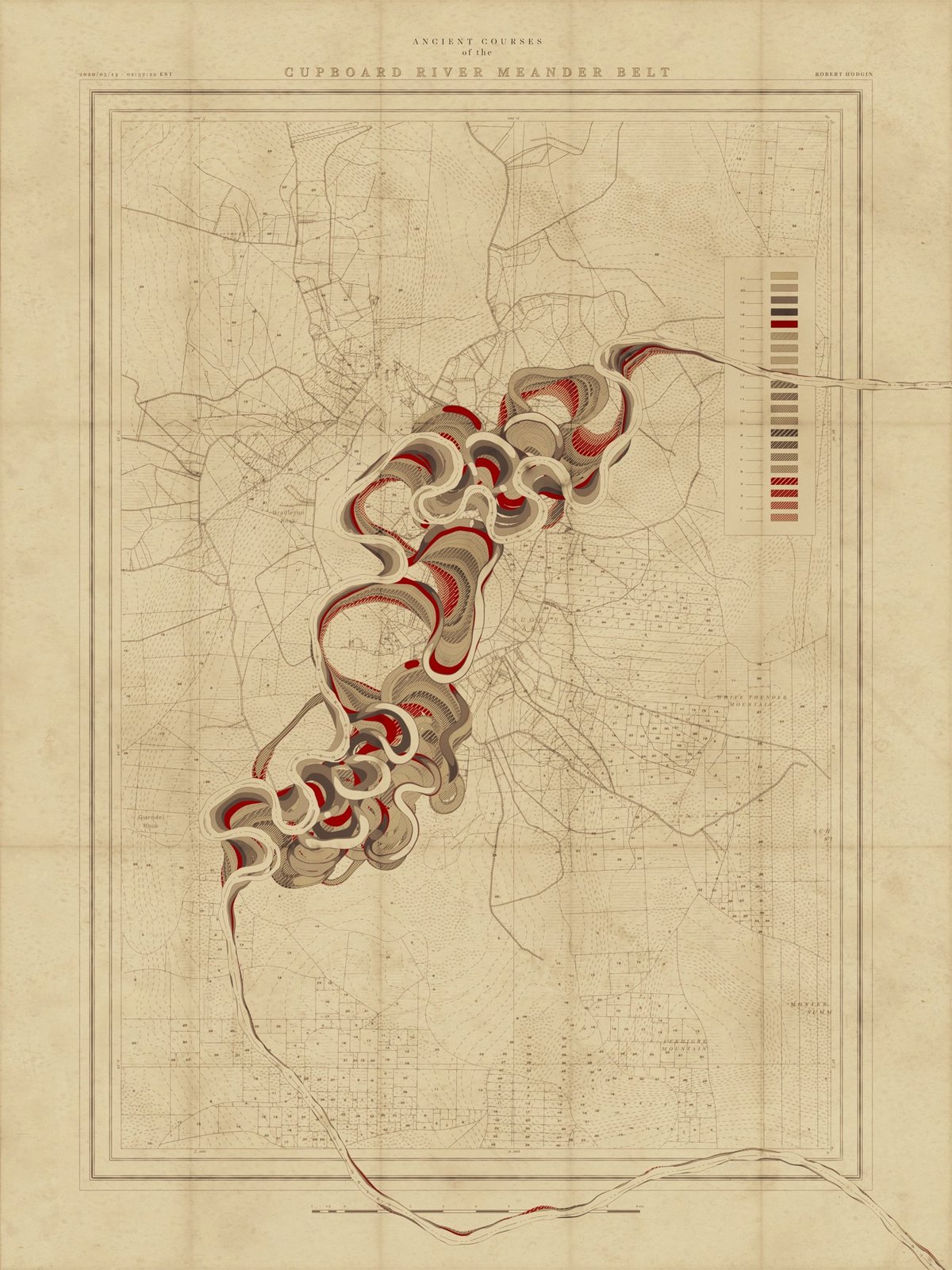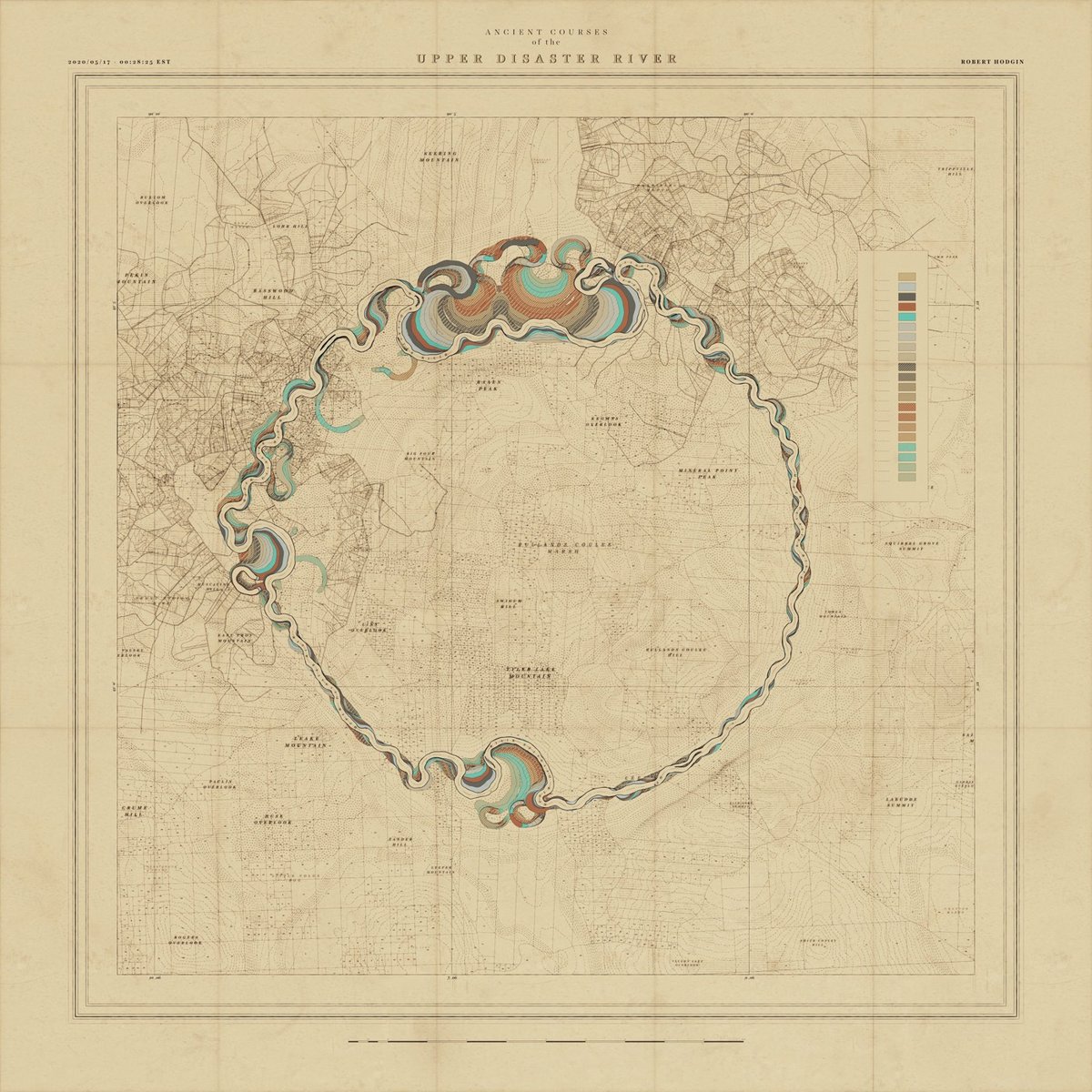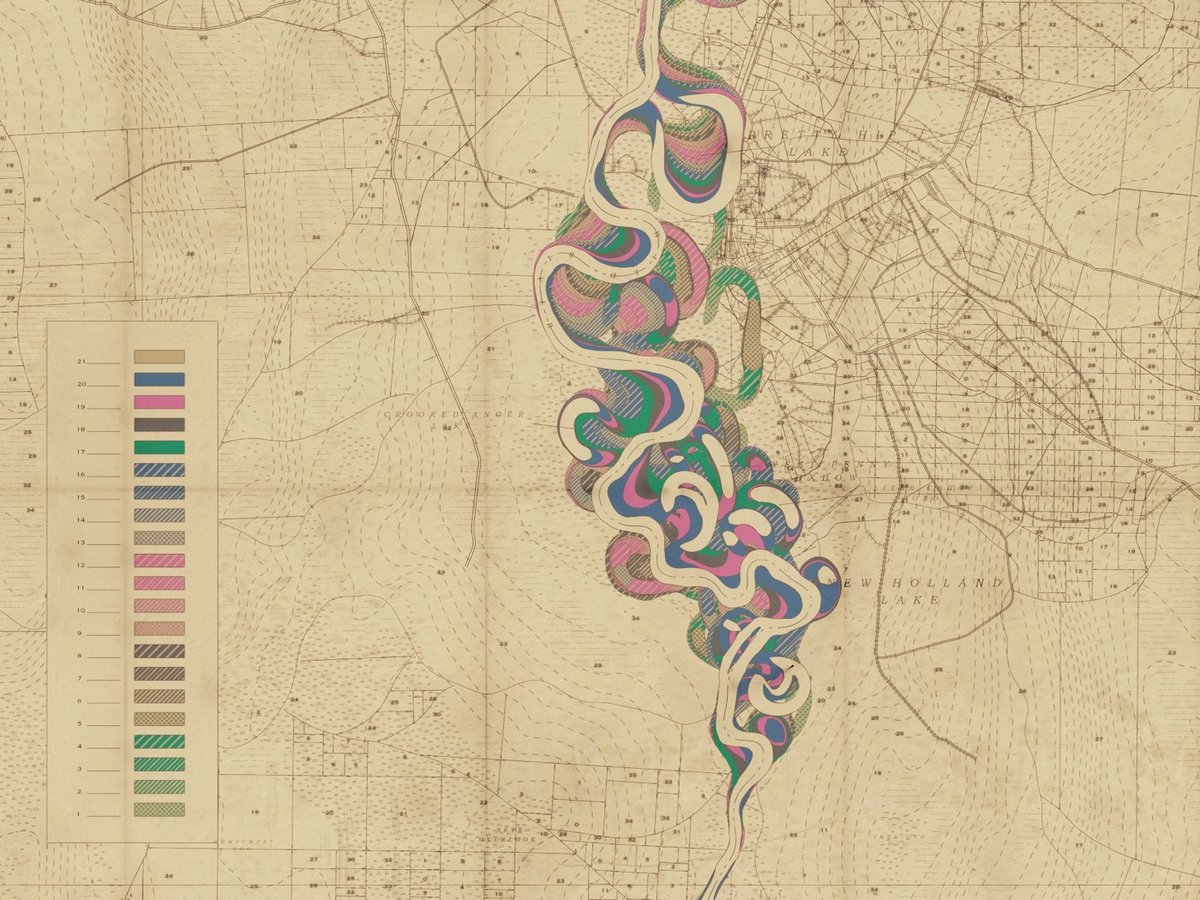kottke.org posts about Robert Hodgin



I have written previously about cartographer Harold Fisk’s wonderful meander maps of the Mississippi River produced for the Army Corps of Engineers. Borrowing the aesthetic of these maps, interactive artist & engineer Robert Hodgin wrote some software called Meander to generate meander maps for fictional rivers.
From an input curve, the terrain, land plots, side roads, highways, marsh land and mountain peaks are generated and prominent features are named. The map is then weathered and rendered in the style of old US Army Corp of Engineers maps from the 1930s and 40s.
You can check some of the generated maps out on Twitter or on Instagram, including some prototypes and animations (this one is my favorite). Hodgin has promised a full write-up of the project; I’ll link to it when he publishes it.
Coincidentally, while I was writing this post I got an email from a reader about an audiovisual installation called Meandering River that displayed “real-time visuals generated by an algorithm and music composed by an A.I.”
Synchronicity!
Update: Hodgin wrote about the Meander project on his website and included several more gorgeous examples of his output.
Robert Hodgin gave a talk at the recent Eyeo Festival for which he “created 12 new projects”. The thing is, any single one of these projects would stand out on a coding artist’s portfolio and Hodgin created all twelve for a conference talk. My favorite of the bunch is this demonstration of how he created the stars for the Planetary app.
Robert Hodgin is continuing his experiments in manipulating Kinect data in realtime with increasingly hilarious results. Here he multiplies himself to get more work done:
When Microsoft released the Kinect, they unwittingly provided a bunch of data hackers with a new toy. Open-source drivers were created (with Microsoft’s blessing) so that you can hook a Kinect up to a PC and do stuff like this:
That’s Robert Hodgin manipulating his Kinect data in realtime with Cinder, which is like Processing (but for C++). Here’s one with him and his cat.
Taking a bit of code from here and a snippet from there, Robert Hodgin made an animation of 3-D snakes in Processing. Check out Hodgin’s use of constraints to spur the invention of a way to keep the snakes from overlapping.
I had no interest in adding a complete 3D physics library because my needs at this time are fairly simple. I am not worried about environment… I just want the snakes to crawl over each other. I decided to try magnetic repulsion despite thinking it probably wouldn’t work well enough. The thinking is this: Take each segment of a snake (200 segments each), and check its distance to every single other segment of every other snake on screen. Stupid, right? Yeah, pretty much. But with some optimization and only checking the segment distances if the snakes in question are close enough for overlap to be possible, I got it to run at 60 fps with 10 snakes.
Actually, when you get right down to it — the atoms in snakes’ bodies, that is — magnetic repulsion isn’t that far off from how matter achieves its electromagnetic opacity. Hodgin also made a video in which the snakes react to music. I wonder if this one’s gonna end up in iTunes. (via waxy)
Noted Processing practitioner Robert Hodgin had one of his designs lifted from Flickr and it found its way onto a $235 Paul Smith t-shirt.
I put the shirt on and it fit fine. I couldn’t stop smiling. The whole thing was so damned surreal. Here I am in a Paul Smith changing room trying on a shirt that features a design element stolen from my Flickr site!
“It fits perfectly,” I told the salesman. “It’s like I made it myself,” I joked and smiled at Lance.
“You did make it yourself,” the man replied, oblivious to the inside joke but wanting to play along.
Lance asked the salesman if he knew anything about the print on the shirt. He said something about hobos and the passing of knowledge or something. I was too distracted to pay attention. I said I will take it and he led us to the cashier. $235 later, I was walking out of the store with my very own personalized Paul Smith shirt.








Stay Connected